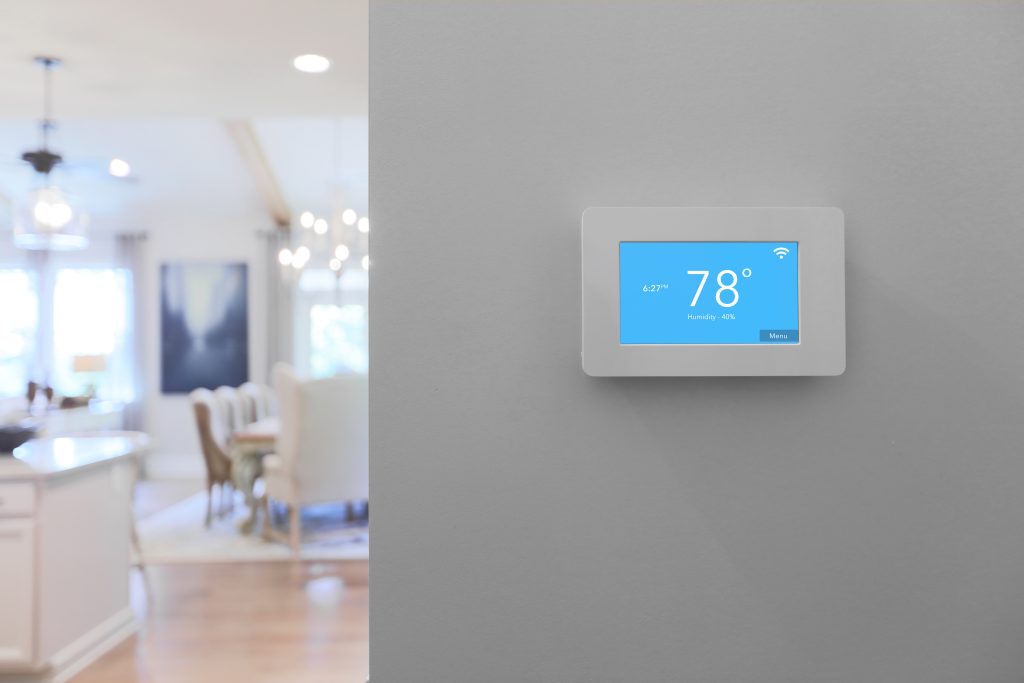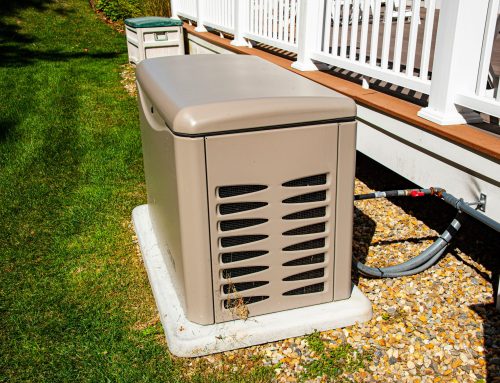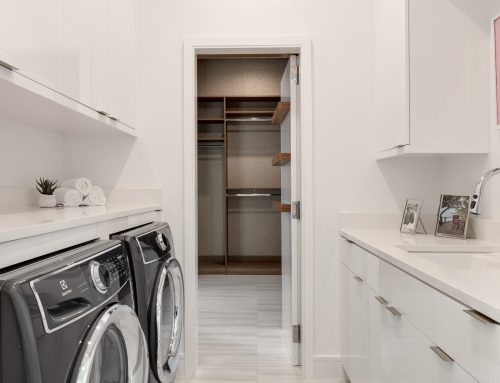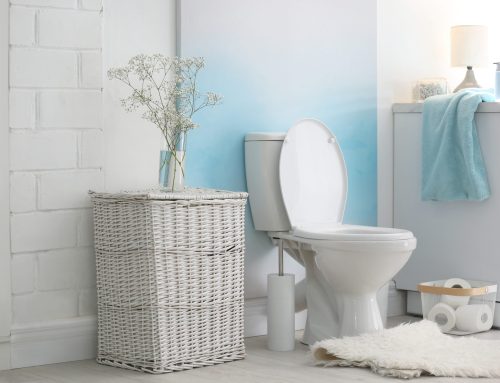
Overview: placing your thermostat the smart way
If your family argues about which room is too hot or too cold, the issue may not be your furnace or AC. The most common cause is poor thermostat placement. Finding the best place to put a thermostat can improve comfort, even out temperatures, and cut energy costs. This guide explains smart thermostat placement tips you can use today. It also shows when to call Northern Mechanical for professional help across Southeastern Wisconsin.
Best place to put a thermostat: learn smart placement tips to stop hot or cold room fights, improve comfort, and cut energy costs. Read now and optimize your home.
Why thermostat placement matters
A thermostat is a sensor and a switch. It reads the nearby air temperature and tells your HVAC system when to run. If the thermostat sits in a spot that is warmer or colder than the rest of your home, the readings are wrong. Your equipment will run too long or shut off too soon. The result is uneven rooms, higher bills, and more wear on your system.
Correct placement helps your thermostat sample the air your family actually feels in your main living areas. That means steadier comfort and fewer hot or cold surprises. It also helps your system cycle the right way, which saves energy and reduces stress on motors and compressors.
The best place to put a thermostat: core rules that work
There is no single exact spot that fits every home. Yet there are proven rules that get you close to the ideal. Use these to choose the best place to put a thermostat in most houses and small commercial spaces.
- Place it on an interior wall near the middle of the home. Interior walls reflect the true indoor air, not the outdoor weather.
- Install it 52 to 60 inches above the floor. This height matches the air people feel while standing or sitting.
- Choose a room you use often in the daytime. A living room, family room, or open-plan area is usually best.
- Keep it away from heat or cold sources. Avoid direct sun, exterior doors, windows, fireplaces, lamps, electronics, and cooking areas.
- Do not place it by supply vents or return grilles. Air blowing on the sensor tricks it into short cycling or overrunning.
- Keep it in a space with free airflow. Do not hide it behind furniture, curtains, bookcases, or inside tight alcoves.
- Make sure the wall cavity is sealed. Drafts inside a hollow wall can cool or warm the back of the thermostat.
Interior wall placement
Exterior walls change temperature with weather and sun. An interior wall gives a more stable reading. Aim for a central wall between main living spaces, such as the wall between a living room and a hallway that opens to other rooms.
Right height for accurate readings
Mounting a thermostat too high reads warmer air and may run cooling longer. Too low reads cooler air and may run heat longer. The middle range of 52 to 60 inches above the floor is a simple rule that works well in most homes.
Central location near daily activity
Pick a space you occupy that is not isolated. If your thermostat is stuck in a rarely used hallway or guest room, it cannot represent the comfort of the rooms you care about. A central living area that sees regular use is the best choice.
Bad places to avoid
Some thermostat locations can never deliver even comfort. Avoid these common mistakes to prevent the hot and cold room tug-of-war.
- Direct sunlight. Sun through windows heats the thermostat and shortens cooling cycles.
- Exterior doors and drafty spots. Door drafts cool the thermostat and extend heating cycles.
- Kitchens. Ovens and steam add heat and moisture that skew readings.
- Near supply vents or returns. Moving air chills or warms the sensor unnaturally.
- Above electronics or TVs. Devices give off heat and confuse the thermostat.
- By fireplaces or space heaters. Local heat makes the system shut off too soon.
- Unconditioned spaces. Garages, sunrooms without ducts, or enclosed porches are not ideal sampling areas.
- Stairways. Temperature changes quickly up and down a stairwell and will not reflect living spaces.
- Behind furniture or curtains. Blocked airflow creates a false microclimate.
Best place to put a thermostat in different home layouts
Single-story homes
Choose a central interior wall in the main living area. Try to center it between bedrooms and the kitchen, but not in the kitchen. If the home has an open plan, pick a wall that faces the open space yet stays out of direct sun and away from vents.
Two-story homes
Heat rises, so upstairs spaces are often warmer. With one thermostat, the best place to put a thermostat is on the first floor in a central area that reflects the most used spaces. For better control, consider zoning: separate thermostats for each floor with independent dampers or systems. Northern Mechanical can design and install zoning for older homes and new builds to solve persistent uneven temperatures.
Split-level homes
Use a mid-level area that connects to both upper and lower living zones. Avoid placing the thermostat at the bottom of a short stair run, where air can pool cooler and give misleading readings.
Open-concept spaces
Mount the thermostat on a central interior wall that faces the open area. Keep it away from tall windows and kitchen islands. If your great room has large south-facing glass, remote sensors can help the thermostat average readings from multiple spots.
Apartments and condos
Pick a wall away from exterior corridor doors. Many multi-family buildings have powerful hallway ventilation that can chill or heat the entry area. A living room wall that is not shared with a utility room is often reliable.
Homes with finished basements
Do not put the main thermostat in a basement unless the basement is your primary living area. Basements run cooler and can force the system to overheat the rest of the home. For frequent basement use, consider a second zone or a smart thermostat with remote sensors approved for multi-room averaging.
Older homes with radiators or boiler systems
Place the thermostat away from radiators and not directly above any radiator piping inside the wall. Old plaster walls can hide drafts. Seal the wire hole behind the thermostat with foam or putty to block cold air from the wall cavity.
Forced-air homes with long duct runs
If some rooms are far from the air handler, put the thermostat in the central living space that best represents average conditions. Pair this with proper duct balancing. Northern Mechanical can adjust dampers, seal leaks, and verify supply and return sizing to support even temperatures.
Heat pump systems
Accurate placement is vital for heat pumps since they run longer, lower-output cycles. Keep the thermostat in a stable area away from sunlight and drafts to prevent frequent auxiliary heat use that raises bills.
Radiant floor heating
Radiant systems respond slowly. The best place to put a thermostat is in the main occupied area at standard height. Do not mount it right above areas with intense floor heating, such as near south-facing sliders where floors can warm unevenly.
Smart thermostats and remote sensors
Smart thermostats can smooth out hot and cold spots with remote room sensors. If your home has one hallway thermostat, adding sensors lets the thermostat average temperatures across key rooms. This helps your system run until more areas reach your target temperature, which reduces the chance one room stays too hot or cold.
- Place sensors in high-use rooms. Bedrooms, the living room, and home offices are good choices.
- Avoid placing sensors near vents, sunlit windows, or electronics.
- Use schedules. Some smart thermostats use different sensors at different times, such as focusing on bedrooms at night.
- Enable occupancy features if available. The thermostat can prioritize rooms where people are present.
- Confirm compatibility. Not all thermostats support multi-sensor averaging. Northern Mechanical can recommend models that fit your system.
How to evaluate and improve your thermostat location
You can test whether your thermostat sits in the right spot with a simple process. A few hours of checking can uncover the cause of uneven rooms and help you find the best place to put a thermostat in your home.
- Map your space. Note sun exposure, exterior doors, returns, and supply vents. Identify the rooms you use the most.
- Take temperature readings. Use a reliable digital thermometer. Record temperatures at seated height in your main rooms during a normal day.
- Compare readings to the thermostat. If the thermostat reads 70 but your living room reads 67 and the sunny dining area reads 73, your placement is likely off.
- Check for local influences. Look for sunlight on the thermostat, nearby lamps, or air drafts from vents.
- Inspect the wall cavity. Remove the thermostat cover and feel for air movement from the wire hole. Seal gaps with foam or putty.
- Test alternate spots. Temporarily tape the thermometer to possible new locations at 52 to 60 inches high. Look for the spot with readings closest to your room averages.
- Move or upgrade. If wiring allows, relocate the thermostat to the best place you found. If not, a wireless thermostat or a smart model with remote sensors may be a simpler fix.
- Balance airflow. After moving the thermostat, adjust supply registers and check that returns are not blocked. This helps the whole system work together.
Fixing hot and cold rooms beyond the thermostat
Sometimes the thermostat is fine, but other issues cause uneven temperatures. Consider these common problems and solutions.
- Dirty filters. Change filters every 1 to 3 months to maintain proper airflow.
- Blocked or closed vents. Open and clear vents in every major room to keep airflow balanced.
- Duct leaks. Leaky ducts lose conditioned air before it reaches distant rooms. Sealing and insulating ducts can make a big difference.
- Improper duct sizing. Some rooms may need larger ducts or more returns. A professional can assess static pressure and airflow.
- Insulation gaps. Attic, wall, or rim joist insulation issues can cause seasonal room swings.
- Window efficiency. Old single-pane windows in just one room can cause outliers. Upgrading or adding window treatments helps.
- Zoning needs. Large or multi-story homes may need multiple zones for real comfort.
- Equipment performance. Aging systems may struggle to keep up. A tune-up can improve capacity and control.
Seasonal tips for Southeastern Wisconsin homes
Southeastern Wisconsin has humid summers, windy winters, and big temperature swings. Local weather affects where the best place to put a thermostat will be and how it performs.
- Winter drafts. Cold winds can create drafts around old doors and windows. Keep the thermostat away from entry areas and seal wall gaps behind the unit.
- Low sun angles. Winter sun can shine deep into rooms and warm a wall-mounted thermostat. Watch for direct sunlight during morning or afternoon hours and adjust placement if needed.
- Summer humidity. Kitchens and bathrooms can hold warm, humid air. Avoid placing the thermostat near these rooms so humidity does not trick the system into overcooling.
- Shoulder seasons. During spring and fall, sun exposure varies by day. Remote sensors can help average out those swings.
Thermostat placement for commercial and light industrial spaces
Offices, retail stores, and smaller industrial facilities need stable control in areas where people work and customers shop. The best place to put a thermostat in these spaces follows similar rules but adds occupancy considerations.
- Place thermostats near occupied zones, not in storage rooms or mechanical spaces.
- Keep sensors away from copy rooms, server racks, and high-heat equipment.
- In open offices, avoid exterior walls and glass corridors. Use interior columns or partitions with good airflow.
- Consider multiple zones for conference rooms and kitchens that see intermittent high loads.
- Use locking covers or access controls to prevent frequent setpoint changes.
Northern Mechanical supports commercial clients across Southeastern Wisconsin with thermostat placement, zoning design, building controls, and ongoing service.
Frequently asked questions about thermostat placement
Is a hallway a good place for a thermostat
Only if the hallway represents the air in your main living spaces and has steady airflow. Many hallways are isolated or drafty. A central living area on an interior wall is usually better.
What height should I mount my thermostat
Mount it between 52 and 60 inches above the floor. This matches the typical breathing zone and gives accurate readings.
Can I put my thermostat near a return grille
No. Strong airflow near returns cools or warms the thermostat and causes short or long cycles. Keep several feet of separation and make sure no direct airflow hits the device.
Where should a thermostat go in a two-story home
With one thermostat, place it on the first floor in a central area you use often. For better comfort, use zoning with a thermostat on each floor. Northern Mechanical can design a zoning system that fits your home.
Do smart thermostats fix poor placement
They can help, especially with remote sensors. However, the best results come from both good placement and smart controls. If moving the thermostat is not practical, sensor averaging is a strong second option.
Will moving my thermostat lower my energy bills
Yes, if the current location causes false readings. Better placement reduces overrun, short cycling, and temperature swings. Most homes see steadier comfort and modest savings after correction.
Can I move a thermostat myself
You can if you are comfortable with low-voltage wiring and patching walls. Turn off power, label wires, and follow manufacturer instructions. If new wiring is needed or you want to add zoning, call Northern Mechanical for professional service.
Simple checklist for the best place to put a thermostat
- Interior wall near the center of the most-used living area
- Mounted 52 to 60 inches above the floor
- Not in direct sunlight or near heat sources
- Several feet from supply vents and returns
- Open airflow, not blocked by furniture or drapes
- Wire hole sealed against drafts
- Optional remote sensors in key rooms for averaging
When to call Northern Mechanical
If your home still has hot and cold rooms after you choose the best place to put a thermostat, the problem may be airflow, ductwork, or equipment control. Northern Mechanical offers full HVAC support for residential, commercial, and industrial clients across Southeastern Wisconsin. Our certified professionals diagnose and correct uneven temperatures with precise placement, duct balancing, zoning, smart thermostat setup, and system tuning. We provide 24/7 emergency services when comfort cannot wait.
Whether you manage a busy office, run a production space, or just want a peaceful home without temperature fights, our team will get your thermostat placement and system performance right. Contact Northern Mechanical today to schedule an assessment and take the guesswork out of comfort.
About Northern Mechanical
Northern Mechanical, LLC is a trusted provider of plumbing and piping services for industrial, commercial, and residential clients in Southeastern Wisconsin. We are known for reliability, affordability, and fast response, including 24/7 emergency support. Our certified professionals focus on high-quality workmanship and clear communication on every job. While this guide centers on the best place to put a thermostat, remember that comfort depends on the entire system. From precise thermostat placement to control upgrades and mechanical service, Northern Mechanical delivers solutions that last.
Ready to stop the hot or cold room fights for good. Reach out to Northern Mechanical for expert guidance, accurate thermostat placement, and a balanced system that keeps every room in your home or business comfortable all year.



